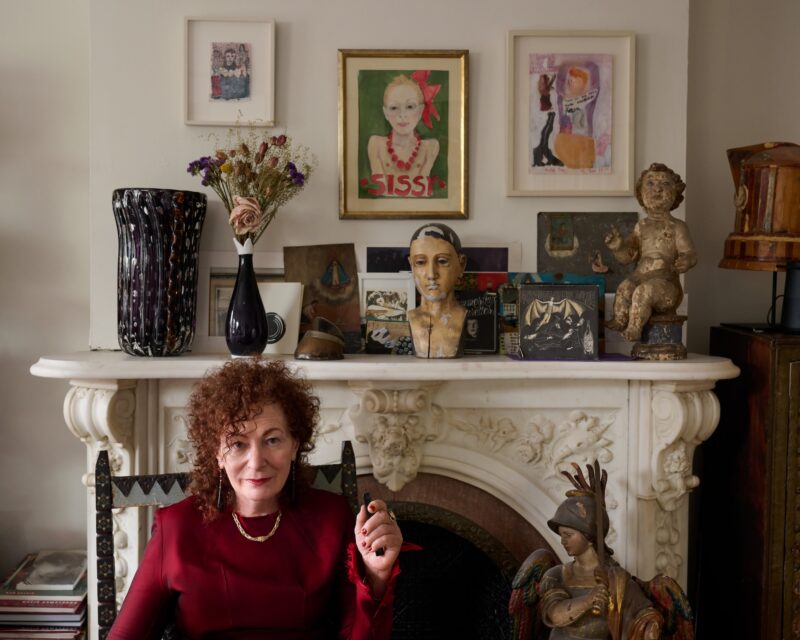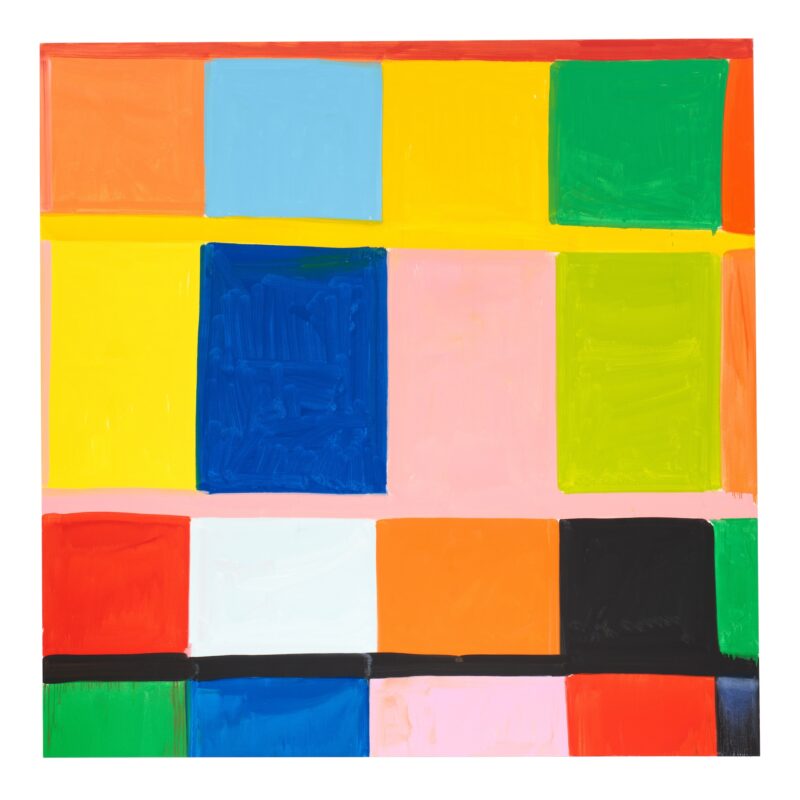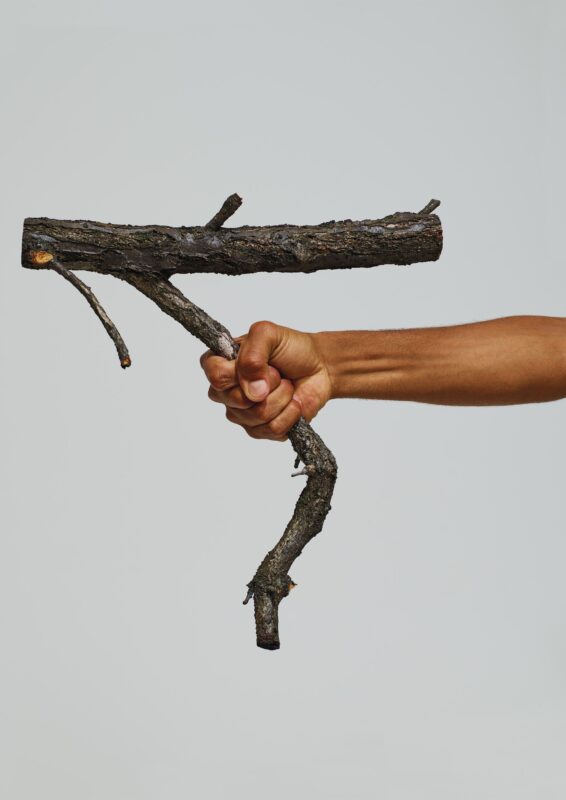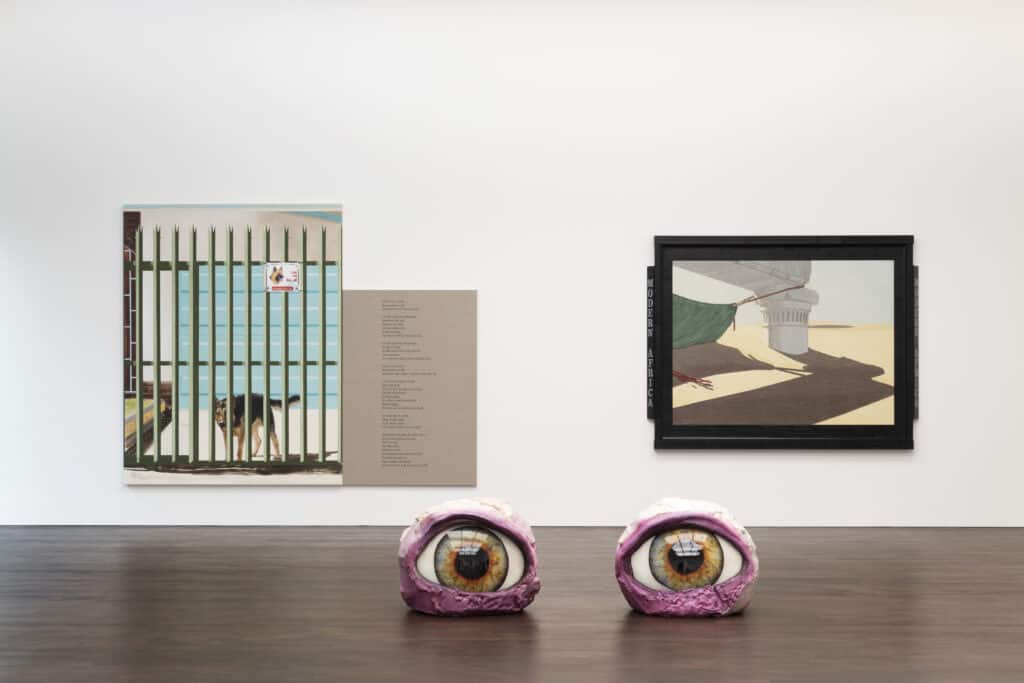
Gagosian keeps curating exhibitions with fascinating intellectual bents, but Haunted Realism stands out amongst the rest. Taking cues from Mark Fisher, Jacques Derrida and a whole host of post-structuralist philosophers, the art on display is a threatening tribute to the constraints human beings place themselves and each other under in the modern cultural landscape. There is scarcely a single image which is not bound, bisected, or caged by the hampering of architecture on the behaviour of those it houses, and it’s apparent that this is absolutely the ‘real’ the art is trying to contact; one of restriction. The unsettling atmosphere that pervades the show is no doubt a product of this.
Haunted Realism has a rather dour view of humanity. Not that this is any kind of surprise, but when John Murphy frames the photograph of a woman dropped dead in the street and calligraphs below ‘Worse Days are Coming’, the state of affairs the exhibition puts forth aren’t likely to bring a smile to face by content alone. However, dig past the grim attitude, the desolate punk sensibilities that ooze forth like Mark Fisher’s own love of Joy Division, and the decrepit figures that leer from the walls, and there’s a vitality that can catch you unawares. To feel the weight of it, you have to pull back first, to the restraints that precede even the misery found on so many of the canvases. Andrea Gursky’s monolithic photograph ‘Hong Kong Shanghai Bank I’, speaks volumes about this subject; a blown-up office block at night, wrapping around countless crannies, empty rooms, and silent night-shift workers standing in elevators to nowhere; into the black. People have a remarkable way of trapping themselves in their own creations.

Next door the same theme is extended to language in Mark Tansey’s ‘View from Mt. Hermeneut’, in an overlapping palimpsestic typeface that has been layered so deeply as to darken the landscape two wandering characters peer over; into nothing. In a remarkable visualisation of one of the countless implications of Derrida’s ‘abundance of signifiers’ (the overlapping of meanings between words, images and neural activations, that facilitates changes in perspective, and the infinite destruction of any one interpretation of our claims about reality), the world of the painting scarcely exists to the figures beyond the linguist and cultural productions which have come to fill it. In many ways, this is no different to Jenny Saville’s ‘Trace’, with the deep marks of the bra strap on a woman’s back filling in for social constraint; a force almost universally desired to be railed against and undone.
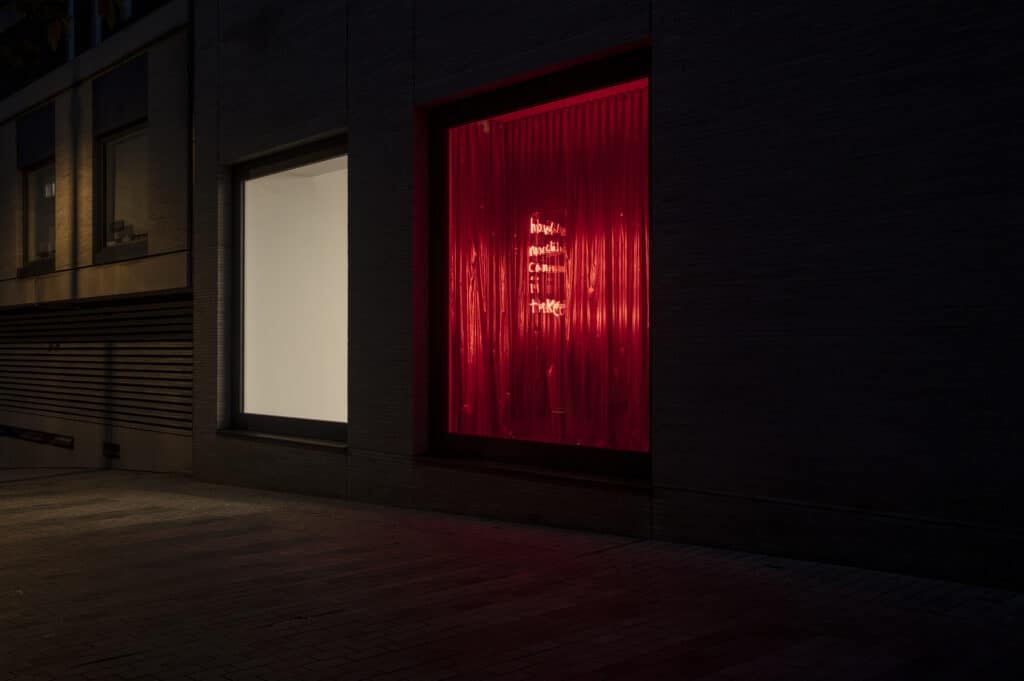
That being said, in all seriousness, there is a remarkably tragic undertone at play. The exhibition is about the loss of the real, of a time and philosophical outlook that could unify the world and understand it without the destructive complexity and interchangeability of interpretations that stem from cultural context. It mourns the existence of identity and subjectivity before being emptied out by deterministic logic; of all desire, feeling and indeed thought being taken as unique, instead of mere productions of their prevailing surroundings. At something of an apex of the cross-theoretical narrative at play, Douglas Gordon’s ‘how much can I take?’ comes to epitomise the frustration felt by artists in the wake of such an environment; providing the ideological nexus point that draws links from social constraint to capitalism. It draws on all that comes before it, from the alienation that capital exchange is said to produce by phenomenologically substituting objects for their value, to the need of work in a capitalist state, to the erosion of older value systems ranging from ethics to liberty; the piece is a stunning cornerstone for the show. The work itself, an ice sculpture of a severed arm beneath a neon sign left outside the gallery just begging to be stolen by passersby, is direct in its cynicism of the public; that people may just prove themselves incapable of mutual respect for the erosion of their ethics by the world such that it is. It all gives the suggestion that things could be bleak but for the art. But, isn’t that rather the point?
The aforementioned vitality, rebellion, and underlying motif of the exhibition is surely this; that the art itself is a form of resistance. It’s a mantra heard many times before, and often scoffed at for justifying the industry’s own production of goods for exchange, objects for the ever-growing pile that is culture. However, in particular drawing attention to the processes of deformation and constraint that the post-modern attitude and situation propounds, these works in synchronicity provide something more. It might be an avenue out of the mess they describe, a call to self-awareness, and however irrational, a foundation by which we denizens of the apparently burgeoning dystopia might begin to build from under the rubble. While displaying all the characteristics of post-modern cynicism, it celebrates the blind force by which people live on. In particular, your attention is drawn at the end to the great sculpted eyes of Urs Fischer’s ‘Dazzled’; they’re likely the last thing you’ll see when looking back into the space. Similarly, visitors will certainly remember Richard Prince’s reportage photographic series ‘Untitled (Upstate)’, that documents the plain and playful goings-on of ordinary life. There’s a hidden Romance of humanity in these works that reflects a wider mood; for being able to grasp their situation in a so-called meaningless world. In grasping these things in an unblinking stare, in protestation for life, language, and one’s own voice, we become the people in the wasteland, but remarkably human nonetheless. Though optimistic might be a stretch, you might even go so far as to describe the show as hopeful.

